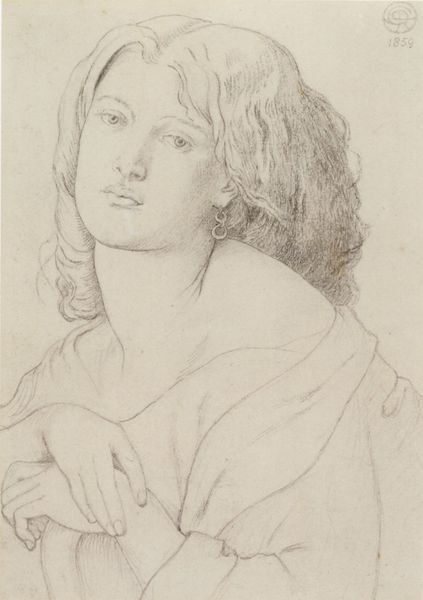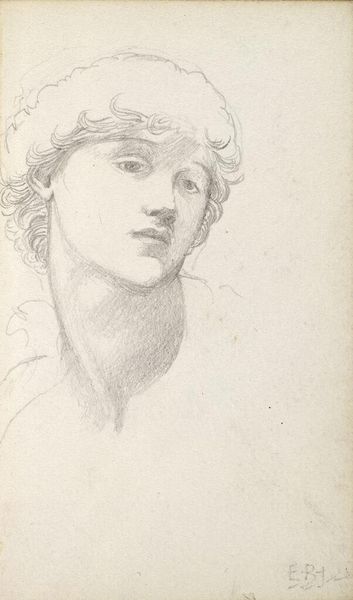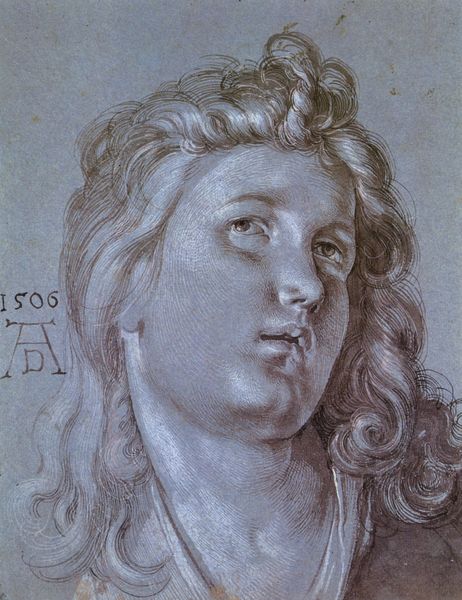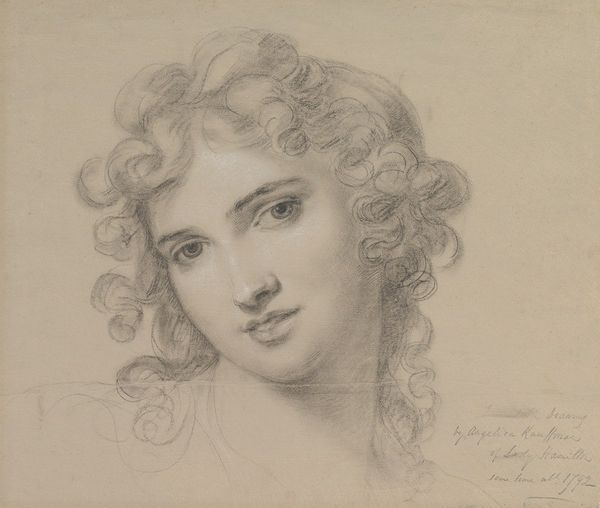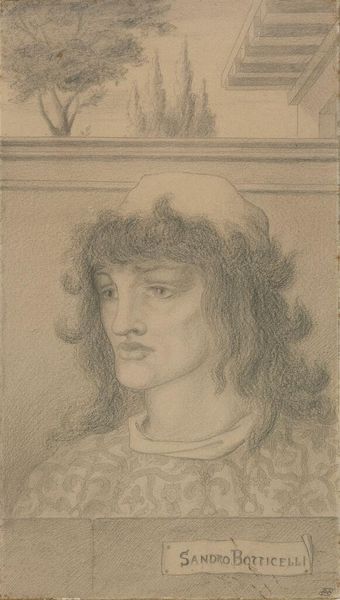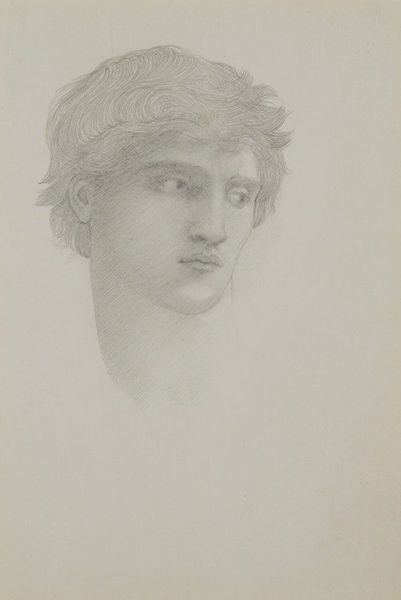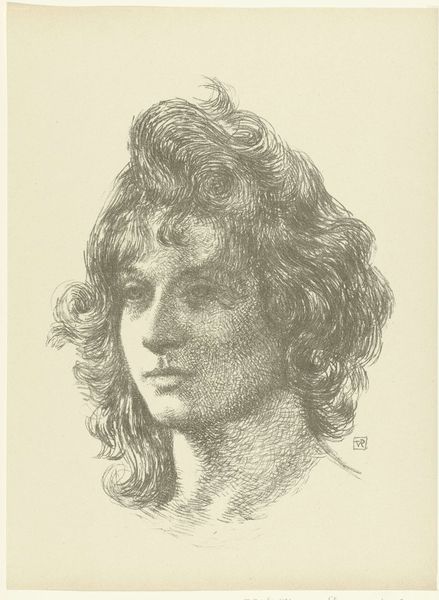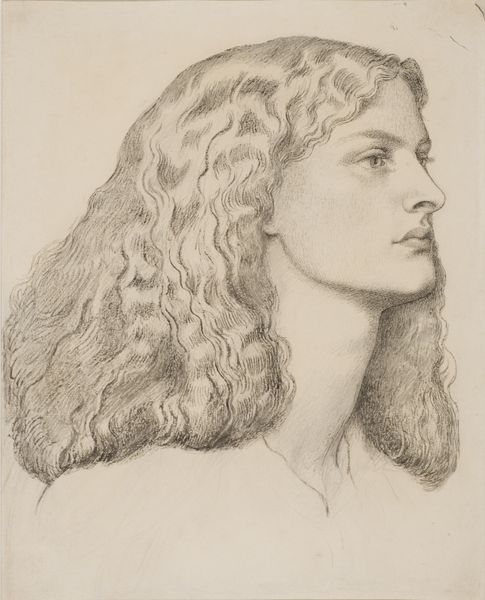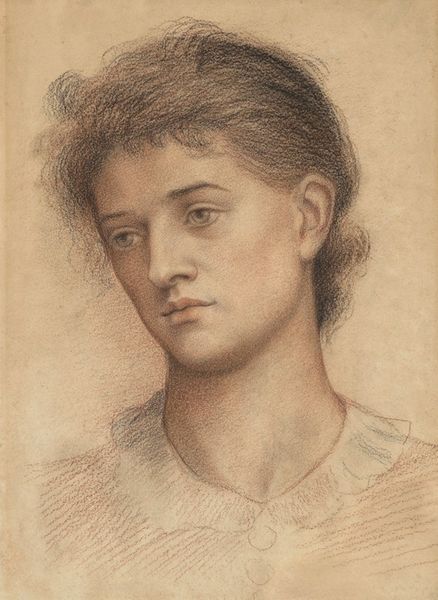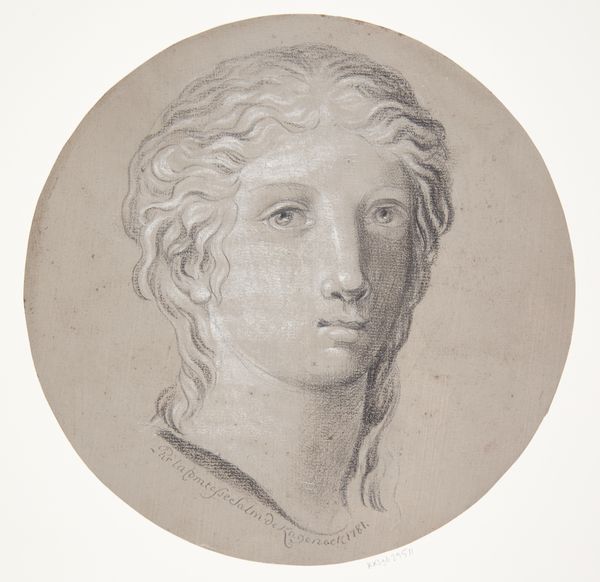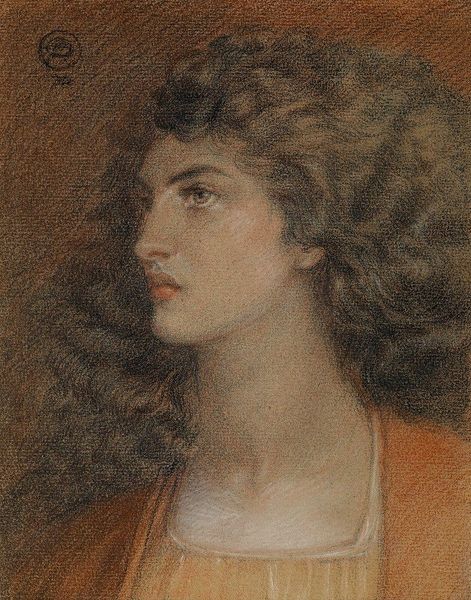
Copyright: Public domain
Editor: So, this is Dante Gabriel Rossetti’s pencil drawing, "Fanny Cornforth," from 1865. It's a fairly simple head and shoulders portrait, but there's something so striking about her gaze. What stands out to you about it? Curator: Rossetti’s depictions of women, including Fanny Cornforth, his frequent model, became potent symbols within the Pre-Raphaelite Brotherhood. Think about the socio-political context: mid-19th century England, rapidly industrializing. The Pre-Raphaelites looked back to pre-Renaissance art for inspiration, emphasizing emotion and spirituality over industrial modernity. This drawing isn't just a likeness; it’s an idealized representation, subtly challenging the prevailing academic art of the time and raising the status of women beyond the traditional domestic sphere. Notice how the emphasis on her eyes creates a public "gaze." Editor: That's interesting – the idea of a 'public gaze' through a drawing. It makes me wonder, was it radical for the time? Curator: Absolutely. Remember, photography was emerging as a powerful tool for documentation, yet artists like Rossetti still chose to create idealized versions of reality. His portrayals helped shape the image of the Pre-Raphaelite woman: independent, beautiful, and enigmatic. It created new icons with women centrally placed and changed who was thought of as a worthy subject. How do you think this contributed to the changing role of women in Victorian society, at least symbolically? Editor: I guess seeing women depicted this way, even if idealized, could have offered a new vision of what was possible, shifting perceptions within the art world and beyond. The sketch has a lot of attention for detail that shows a romantic, elevated woman. Curator: Exactly. Rossetti's 'Fanny Cornforth' participates in the wider cultural discourse around beauty, gender, and social ideals. Looking at it through that lens offers richer insight than just focusing on its aesthetic qualities. Editor: This has really made me rethink how portraits can reflect social change and question the status quo. Thanks! Curator: My pleasure. It’s rewarding to unpack the layers of history embedded within a single drawing.
Comments
No comments
Be the first to comment and join the conversation on the ultimate creative platform.
